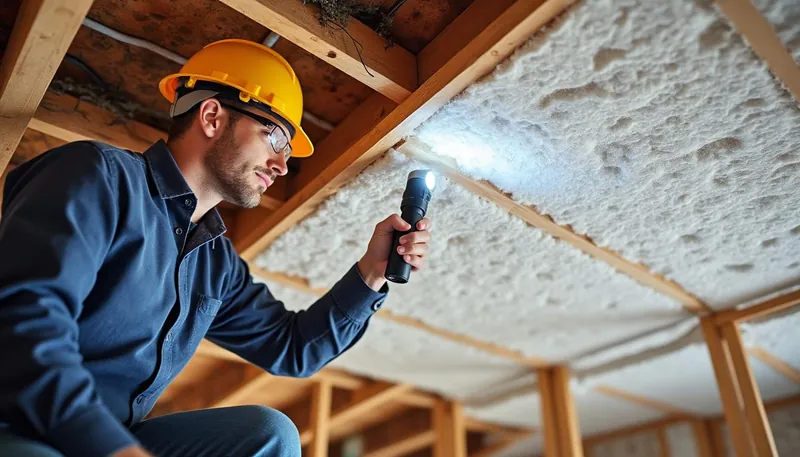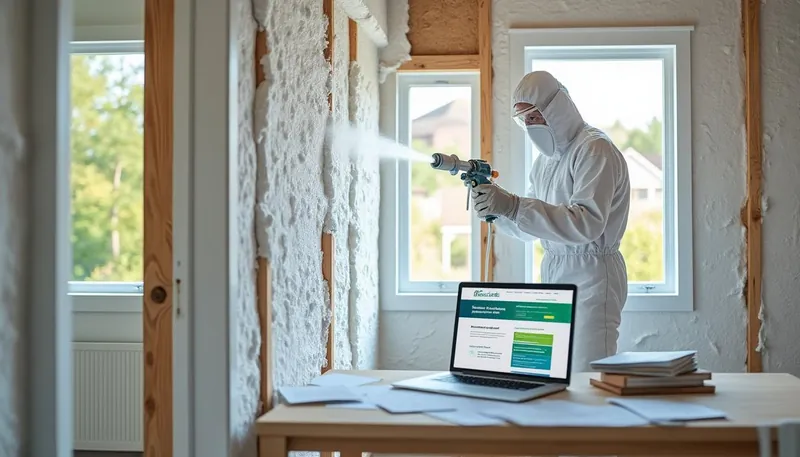Are you considering foam insulation for your home? If so, you’re likely wondering about its lifespan and how long this investment will keep your home comfortable and energy-efficient. Foam insulation is popular among homeowners for its outstanding thermal properties and ability to create airtight barriers, significantly reducing energy costs over time. However, understanding how long foam insulation lasts and what factors contribute to its longevity is vital for anyone looking to make this investment. Let’s dive into the details!
In brief:
- Foam insulation can last between 20 to 30 years or more. 🎉
- Types include open-cell and closed-cell foam, each with distinct properties. 🏠
- Proper installation and maintenance can impact longevity. 🔨
- Regular inspections are essential to detect issues early. 🔍
- Understanding lifespan helps in planning upgrades when necessary. 📅
The Lifespan of Foam Insulation: What to Expect
When it comes to foam insulation, one of its most appealing features is its longevity. On average, foam insulation is known to last anywhere between 20 to 30 years and can even exceed these numbers if installed correctly and maintained. This durability can be attributed to its unique characteristics, such as strong adhesion to surfaces and resistance to moisture, which helps it retain its insulating properties over time.
The lifespan of foam insulation largely depends on the type used. There are mainly two types of foam insulation: open-cell and closed-cell.
- Open-cell spray foam is softer and more flexible. It can effectively expand to fill gaps and crevices, but it is more susceptible to moisture penetration, which can reduce its effectiveness over time.
- Closed-cell spray foam features a denser composition, providing greater resistance to water and air infiltration. This makes it ideal for long-term insulation needs in various climates.
Regardless of the type, proper installation is critical. If foam insulation is installed poorly, it can lead to premature degradation and reduced performance. Homeowners should always work with experienced professionals to ensure the installation follows best practices.
| Type of Foam | Lifespan | Key Features |
|---|---|---|
| Open-cell Spray Foam | 20-30 years | Flexible, fills gaps but susceptible to moisture |
| Closed-cell Spray Foam | 30-80 years | Denser, highly resistant to moisture and air infiltration |

Maintenance: Keep Your Foam Insulation in Top Shape
While foam insulation is relatively low-maintenance compared to other materials, it doesn’t mean you can completely forget about it after installation. Regular inspections and some basic maintenance practices are essential to ensure your foam insulation continues performing at its best.
Here are some maintenance tips to consider:
- Check for Moisture Issues: Look for any signs of dampness or water accumulation. Closed-cell foam is resistant, but leaks or persistent moisture can lead to issues. 🚰
- Monitor for Pests: Ensure that pests or rodents haven’t found a way to your home by inspecting around the insulation. Some animals could exploit gaps to enter. 🐭
- Inspect for Structural Shifts: Your home may settle over time, possibly causing gaps or cracks in the insulation. Regular inspections can catch these changes early. ⚒️
- Assess for Aging: Extreme changes in temperature or prolonged UV exposure can cause foam to degrade. If you notice crumbling or changes in texture, it may be time for an upgrade. ☀️
By staying proactive in your maintenance efforts, you can extend the life of your foam insulation, helping maintain energy efficiency and overall comfort.
When to Consider Replacement or Reinforcement
Over time, even the best foam insulation may require replacement or reinforcement. Several signs can signal it’s time to assess your insulation’s condition more aggressively.
Watch for the following indicators:
- Increased Energy Bills: If you notice a spike in your utility costs, it might be due to insulation failure. ❗
- Uneven Temperatures: Hot or cold spots in your home typically mean that the insulation is not functioning properly. 🌡️
- Visible Damage: Look for cracks, holes, or areas where foam may have detached from surfaces. 🕳️
- Signs of Water Damage: Mold or mildew growth can be serious concerns. Address these issues immediately for safety. 🚫
If you encounter any of these issues, it may be wise to consult a professional insulation company. They can evaluate whether your insulation needs simple repairs, additional layers, or complete replacement. Good insulation, after all, is critical for maintaining a comfortable and energy-efficient environment.
| Issue | Possible Solution |
|---|---|
| Higher Energy Bills | Inspect for gaps or compromised areas for potential repair or reinforcement. |
| Visible Damage | Consider patching or applying another layer of spray foam. |
| Mold Growth | Immediate removal and assessment of water sources needed. |

Comparing Foam Insulation with Other Types
When considering insulation options, it’s essential to compare foam with other commonly used insulation types, such as fiberglass and cellulose. Each insulation material comes with its unique advantages and disadvantages, which can impact your decision.
| Insulation Type | Longevity | Pros | Cons |
|---|---|---|---|
| Foam Insulation | 20-30 Years | Excellent air sealing, high R-value, moisture-resistant | Higher initial cost, professional installation required |
| Fiberglass | 80-100 Years | Cost-effective, widely available, non-combustible | Lower R-value, settling can occur over time |
| Cellulose | 20-30 Years | Eco-friendly, good air leakage resistance | Needs proper installation to avoid moisture absorption |
This comparison illustrates why foam insulation is often selected for its combination of effective thermal performance and longevity. However, understanding individual needs, budget, and potential environmental concerns will lead to a better choice for your home investment.
How can I tell if my foam insulation is still effective?
Look for indicators like uneven temperatures in your home or higher energy bills, which may suggest that the insulation is not functioning properly. Inspecting for visible damage can also help determine effectiveness.
What is the difference between open-cell and closed-cell foam?
Open-cell foam is softer and more flexible, while closed-cell foam is denser and offers greater moisture resistance, making it suitable for long-term insulation needs.
Can foam insulation be added over existing insulation?
Yes, you can apply additional layers of foam insulation over existing layers, provided that the previous insulation is in good condition and not heavily damaged.
How often should I inspect my foam insulation?
It is advisable to inspect foam insulation at least once a year or after major weather changes to ensure that it remains effective.
Is foam insulation safe for my home?
Foam insulation is generally safe when installed properly. Choosing reputable brands and ensuring good ventilation during installation can minimize any risks associated with off-gassing.


